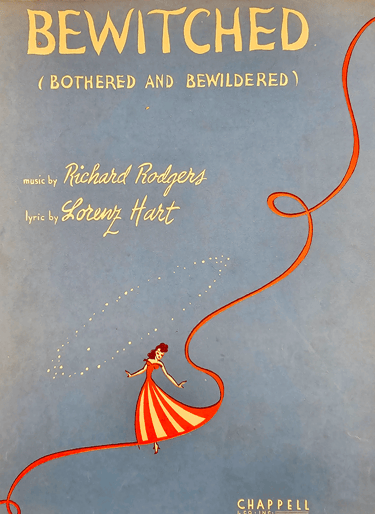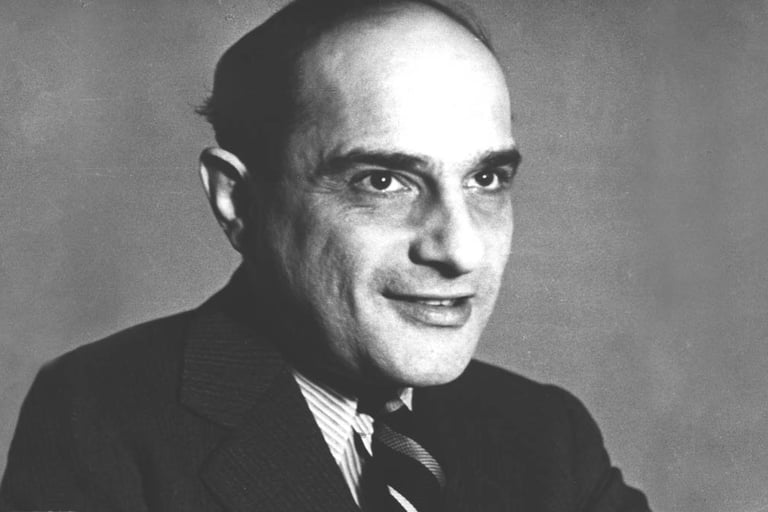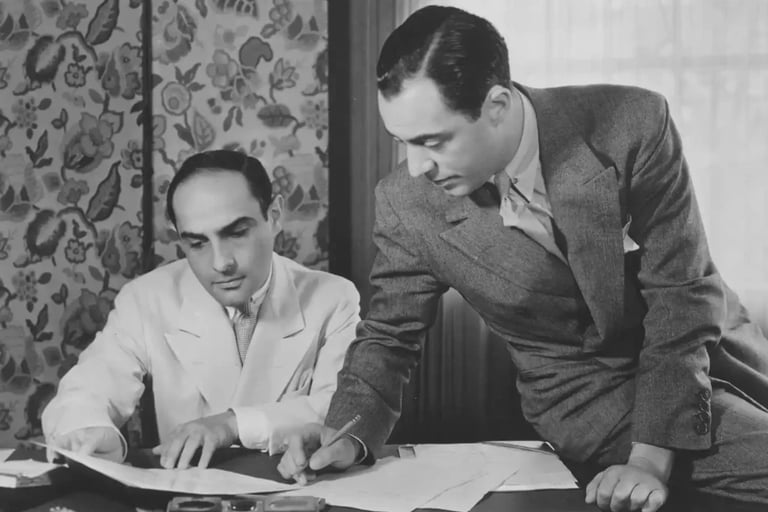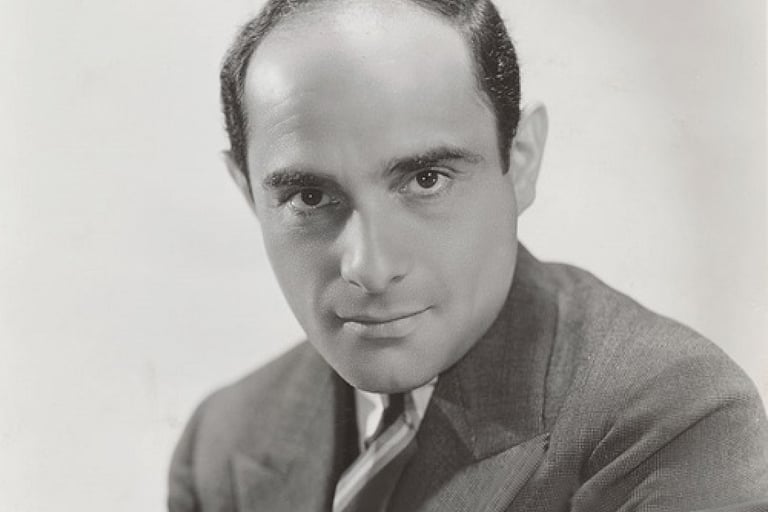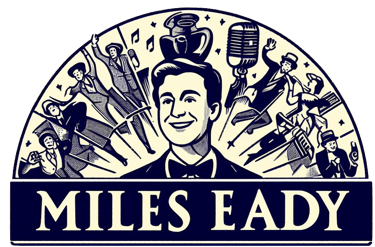Lorenz Hart Part Four: Pal Joey and the Dark Edge of the Musical
Hart brings maturity to Broadway
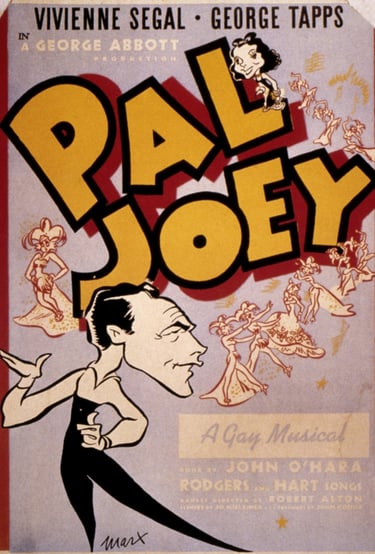

By 1940, Lorenz Hart’s collaboration with Richard Rodgers had reached both a pinnacle and a precipice. That year, Pal Joey premiered—a show that would shock Broadway’s sensibilities, daring to explore cynicism, moral ambiguity and the raw realism of urban life at a time when musicals still largely trafficked in sparkle and innocence. For Hart, the urbane wit and subtle melancholy that had already transformed the American musical found their most vivid—and darkest—expression in this musical. And yet, behind the brilliance of the lyrics lurked Hart’s personal shadows: sexual frustration, alcoholism and an intensifying sense of isolation. These private demons would accelerate the unraveling of his life and ultimately set the stage for Rodgers’ legendary partnership with Oscar Hammerstein II, signaling a new era.
The Mirror of Hart’s Own Life
The musical’s themes—sexual opportunism, moral compromise, and urban disillusionment mirrored Hart’s inner life. By 1940, Hart was a man beset by personal turmoil: diminutive, socially marginalised due to his homosexuality, and profoundly insecure about his appearance. Loneliness was a constant companion, and alcohol both fueled and punished his creative impulses. On bad days Hart would retreat to bed, consumed by drink. In Pal Joey, Hart transmuted this private bitterness into public theatre, creating a world as sharp and sophisticated as it was morally complex.
Joey Evans: Broadway’s Anti-Hero
Pal Joey was a revelation, a musical that refused the conventional niceties of its predecessors. Enter Joey Evans: nightclub heel, smooth talker, and unapologetic opportunist. He wasn’t a charming romantic hero; he was a “seedy, money-hungry denisen of cool users,” manipulating women with the casualness of a city street hustler. Hart’s lyrics—sharp, urbane, and tinged with melancholy—offer an incisive psychological portrait of this anti-hero. In Bewitched, Bothered and Bewildered and I Could Write a Book, Hart wove sexual sophistication with emotional nuance, crafting songs that were both playful and morally provocative. Contemporary critics squirmed at the frankness of the subject matter, unaccustomed to such adult realism on Broadway. But for Hart, this was exactly his milieu: the collision of witty elegance with a darker, more disillusioned undercurrent.
Lyrical Mastery Meets Urban Realism
Hart’s lyricism in Pal Joey reveals the full range of his technical brilliance. Gone were the playful rhymes of The Garrick Gaieties; in their place were internal rhymes, witty inversions, and carefully measured rhythms that gave voice to morally ambiguous characters. Joey’s interactions with women—comic, seductive, manipulative—were rendered with a mordant sophistication, blending the comic with the tragic. The tension between intellectual virtuosity and emotional rawness made the narrative unsettling, compelling, and, above all, modern. Hart’s genius lay in marrying his early verbal artistry to the urban realism the story demanded, creating what critics would later call a turning point in American musical theatre.
The Toll of Genius
The very qualities that made Pal Joey a triumph also accelerated Hart’s personal decline. Critics recoiled at the show’s cynical tone, and the public’s discomfort mirrored Hart’s own sense of alienation. Already dependent on alcohol, already socially isolated, Hart found in the backlash a painful reinforcement of his inner battles. The disappointment over Pal Joey's reception exacerbated his irresponsibility and bouts of depression that would culminate with his death in November 1943.
Pal Joey as a Turning Point in Musical Theatre
Beyond its artistry, Pal Joey reshaped Broadway. Its urban realism, moral complexity, and psychologically nuanced characters foreshadowed the integrated, character-driven musicals that Rodgers would later perfect with Hammerstein. Hart’s decline inadvertently paved the way for this evolution: Rodgers needed a collaborator who could pair musical ingenuity with reliability. Where Hart offered urbane wit, melancholy and ambiguity, Hammerstein would bring sincerity, idealism and moral clarity. The shift from Hart to Hammerstein, from the cynical sophistication of Pal Joey to the sunlit optimism of Oklahoma!, represents the transformation in American musical theatre—a development from irony to earnestness, from jazz-age sophisticated parody to sincere lyricism.
The Lasting Significance
Pal Joey endures as a testament to Hart’s capacity for innovation. Though initially controversial, revivals have cemented its reputation as a milestone in Broadway history. Critics now celebrate the psychological realism and social commentary embedded in Hart’s lyrics, recognising the show as a daring precursor to modern musical storytelling. Hart did not live to witness this vindication. His death at forty-seven—shadowed by alcoholism and private despair—contrasts sharply with Rodgers’ post-Pal Joey success.
Dualities and Legacy
Ultimately, Pal Joey encapsulates the dualities at the heart of Lorenz Hart’s genius: wit and melancholy, urbane sophistication and moral ambiguity, artistic mastery and personal fragility. The musical’s edgy realism reflects both the interwar urban milieu and Hart’s own inner turbulence. It marks the apex of Hart’s lyricism while simultaneously foreshadowing his decline—a moment when personal demons began to eclipse professional achievements, creating space for Rodgers’ next artistic chapter with Hammerstein.
In reflecting on Hart’s contributions through Pal Joey, we see the intricate dance of innovation and self-destruction. His lyrics, imbued with irony, charm, and bittersweet insight, paved the way for musicals that explored flawed, complex characters. While Hart retreated into drink, Rodgers looked ahead, cultivating a partnership with Hammerstein that shifted Broadway toward narrative cohesion and optimism. Yet without the daring, dark edge of Hart’s vision, the evolution of the American musical would have been markedly different. Pal Joey remains a testament to a lyricist whose genius was inseparable from his melancholy, a work that both challenged audiences and foretold the transformation of the genre he helped define.
Watch
Before you watch: these videos are official releases and still live at time of posting.
“Bewitched, Bothered and Bewildered” – Pal Joey (1957)
Rita Hayworth's performance captures the blend of glamour and vulnerability that runs through Hart’s lyrics.
Further Reading
Broadway Babies: The People Who Made the American Musical by Ethan Mordden (1984)
Explores how Pal Joey marked Broadway’s shift toward sharper realism and moral complexity.
Buy it here
Song by Song: The Lives and Lyrics of 14 Great Lyricists by Caryl Brahms and Ned Sherrin (1984)
Profiles Hart’s lyrical brilliance and shows how Pal Joey captured the wit and weariness of modern love.
Buy it here
Gene Kelly: A Life of Dance and Dreams by Alvin Yudoff (1999)
Reveals how Kelly’s portrayal of Joey embodied Hart’s cynical charm and emotional depth.
Buy it here
“I Could Write a Book” – Pal Joey (1957)
Frank Sinatra’s smooth charm meets Hart’s wry romanticism in this scene, revealing the lyricist’s gift for turning flirtation into philosophy.


